skip to main |
skip to sidebar
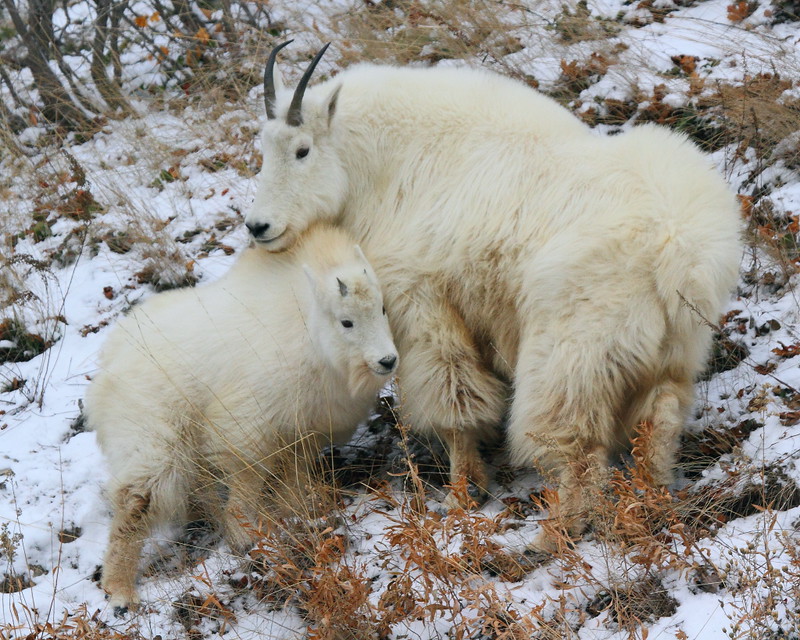 Figure 1. Mountain Goats Nanny and Kid.
Mountain goats are not native in greater Yellowstone area, but were introduced decades ago. They ventured into Yellowstone and Grand Teton National Parks in recent years and caused concerns. For example, bighorn sheep may suffer because of the competition.
Figure 1. Mountain Goats Nanny and Kid.
Mountain goats are not native in greater Yellowstone area, but were introduced decades ago. They ventured into Yellowstone and Grand Teton National Parks in recent years and caused concerns. For example, bighorn sheep may suffer because of the competition.
One place to see these goats is at the Snake River Canyon around Alpine, which is about 30 minutes south of Jackson, WY. These goats might be seen just couple miles north of Alpine on US-89 along Snake River, though my first sight of them was on US-26 west of Alpine in Idaho.
It is more likely to see them here in winter. When doing snow plowing, salt is commonly placed on the highway to help melt the ice. Goats love salt, and this is why they are rather sighted in winter than in summer.
When I made a trip to Grand Teton National Park during Thanksgiving in 2015, I saw a herd come to the road to lick the salt. It's fun to see, but it causes traffic hazards. There are couple turnouts at this section to look for goats, but be cautious when you are driving here.
 Figure 1. Mountain Goats Licking Salt on Highway US-89.
Figure 1. Mountain Goats Licking Salt on Highway US-89.
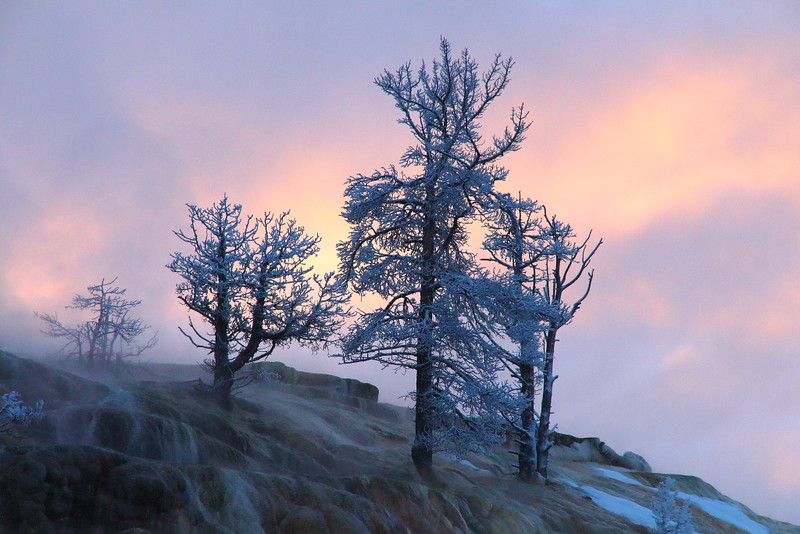 Figure 1. Winter Sunset at Mammoth Hot Springs, Yellowstone National Park.
The major feature in Mammoth Hot Springs is the travertine terraces, especially those with flows for hot springs. I've been there many times and I found there is always something different. The reason is the flows are not constant. Sometimes a hot spring here is active but another is dormant somewhere else, and vice versa.
Figure 1. Winter Sunset at Mammoth Hot Springs, Yellowstone National Park.
The major feature in Mammoth Hot Springs is the travertine terraces, especially those with flows for hot springs. I've been there many times and I found there is always something different. The reason is the flows are not constant. Sometimes a hot spring here is active but another is dormant somewhere else, and vice versa.
In addition to travertine terraces, the trees grown here are also fun to watch. It is surreal as it doesn't seem possible for this combination. The winter snow on the tree and steam from the hot springs makes this effect even stronger.
I made a trip during 2013-2014 winter. The lighting didn't really work on this day. When it approached the sunset, it started to turn into my favor. The clouds and steams kept moving and I managed to get this shot.
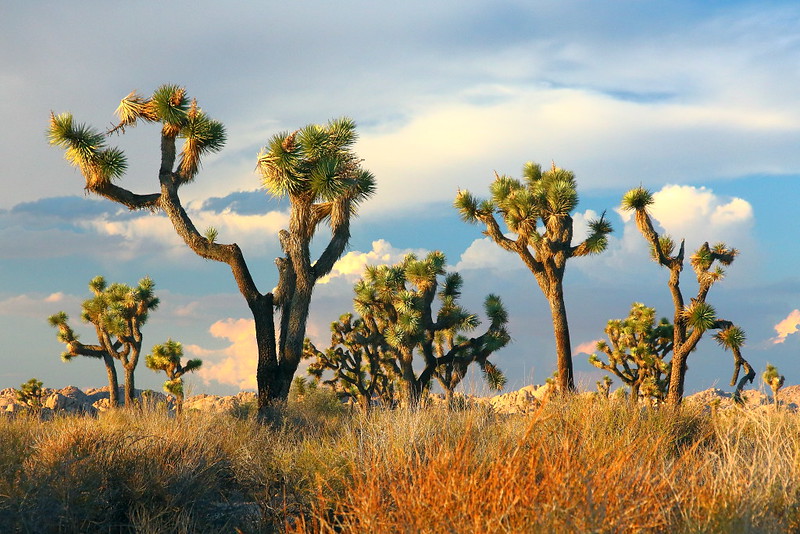 Figure 1. Joshua Tree, Joshua Tree National Park.
Since I moved to San Diego, I've visited Joshua Tree National Park many times. While there are other features in this park, Joshua trees are one of them.
Figure 1. Joshua Tree, Joshua Tree National Park.
Since I moved to San Diego, I've visited Joshua Tree National Park many times. While there are other features in this park, Joshua trees are one of them.
Although Joshua trees can be seen in many places in Mojave Desert, Joshua Tree National Park provides easy access and many turnouts for a close-up look. They can be seen in many places on the roadside, but this doesn't mean it is easy to take a good shot of this iconic tree, technically a yucca, in the desert.
One problem is the lack of contrast. It blends in with the surroundings and so it is not easy to stand out, even at the golden hour. In most cases, the light is still flat, though warm, when the sun is at low angles. It is easy to take tons of shots of the tree, but is extremely difficult to get a good shot.
Stormy weather is probably the best condition one can get a good shot of the tree. The irregular lighting and clouds provide the contrast which does not exist due to the sunny weather. It is not done yet. You still need to search for a good spot to make it work. The lighting and cloud conditions are changing all the time. You will need to do it quick, or wait until next time.
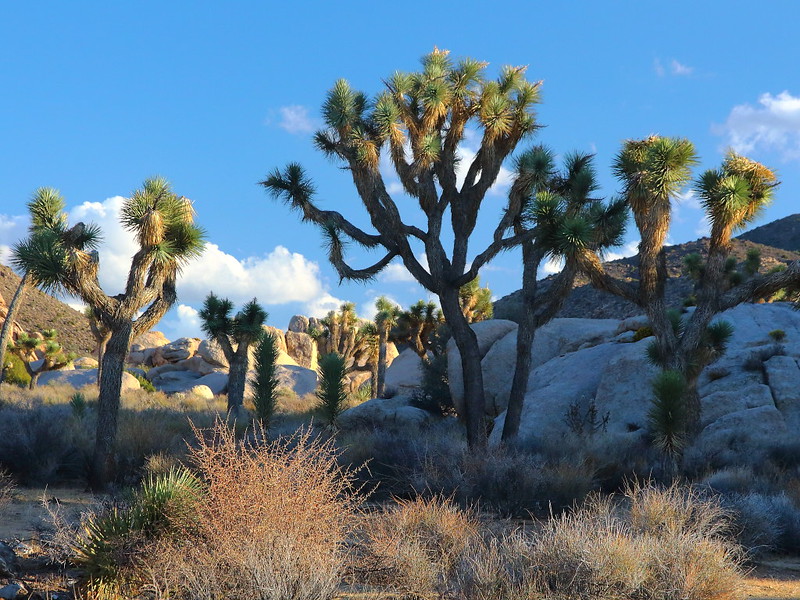 Figure 2. Joshua Tree, Joshua Tree National Park.
Figure 2. Joshua Tree, Joshua Tree National Park.
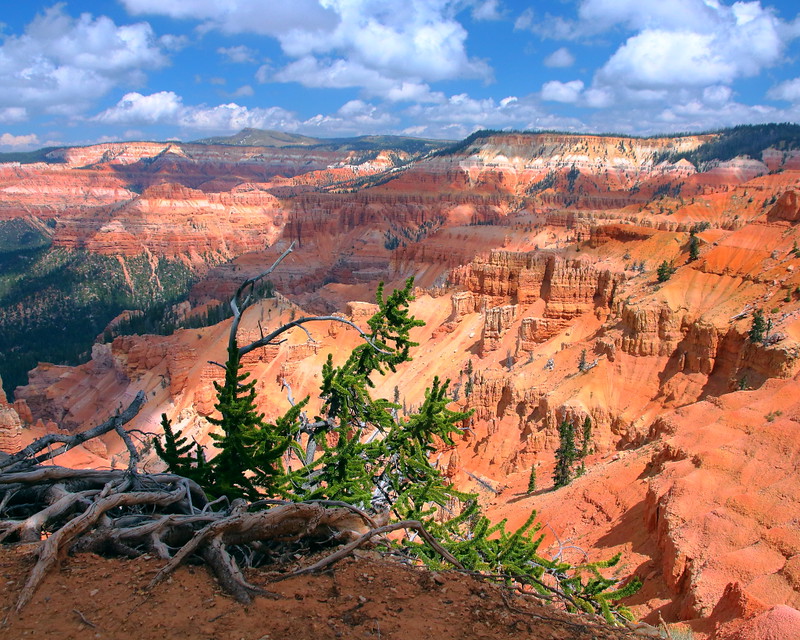 Figure 1. Great Basin bristlecone pine on Ramparts Overlook Trail, Cedar Breaks National Monument.
Great Basin bristlecone pine is considered the oldest non-clonal tree in the world. The oldest of this kind lives in the White Mountains in Inyo National Forest and the Snake Range in Great Basin National Park.
Figure 1. Great Basin bristlecone pine on Ramparts Overlook Trail, Cedar Breaks National Monument.
Great Basin bristlecone pine is considered the oldest non-clonal tree in the world. The oldest of this kind lives in the White Mountains in Inyo National Forest and the Snake Range in Great Basin National Park.
Cedar Breaks National Monument is another place to see these trees. The first time I planed in this Monument is in 2009. It was cold, windy and snowing in late May. After a short ranger talk, I gave up because of the weather. It is six years later that I've got the chance to visit the same place. This time the weather cooperated. It was sunny in early September and I made the hike to see these trees up close.
The best examples of the Great Basin bristlecone pines are along Ramparts Overlook Trail in this Monument. Though the round-trip is an easy to moderate 4 miles, you can stop in the middle point, Spectra Point, to get a good look as well. The oldest in this Monument is about 1,700 years old at Spectra Point. Together with others, you can get a good understanding about their living environment, poor soil, dry, cold and windy weather. Their great age comes from adversity.
While they are not the oldest in their kind, the red amphitheater with hoodoos in the backdrop compensates it and makes it even more fascinating. For me, it is quite worth the trip and I am sure to come here again.
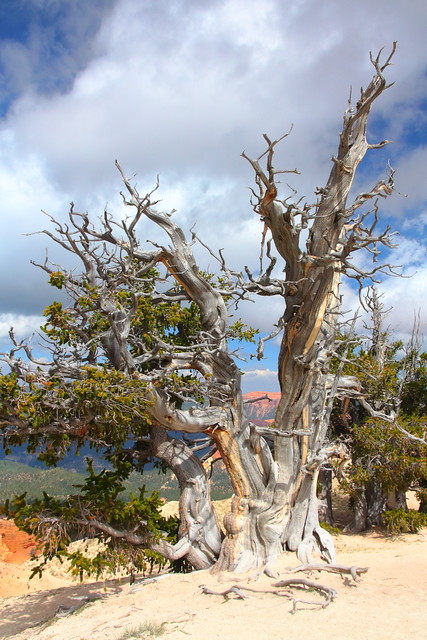 Figure 2. Great Basin bristlecone pine at Spectra Point, Cedar Breaks National Monument.
Figure 2. Great Basin bristlecone pine at Spectra Point, Cedar Breaks National Monument.
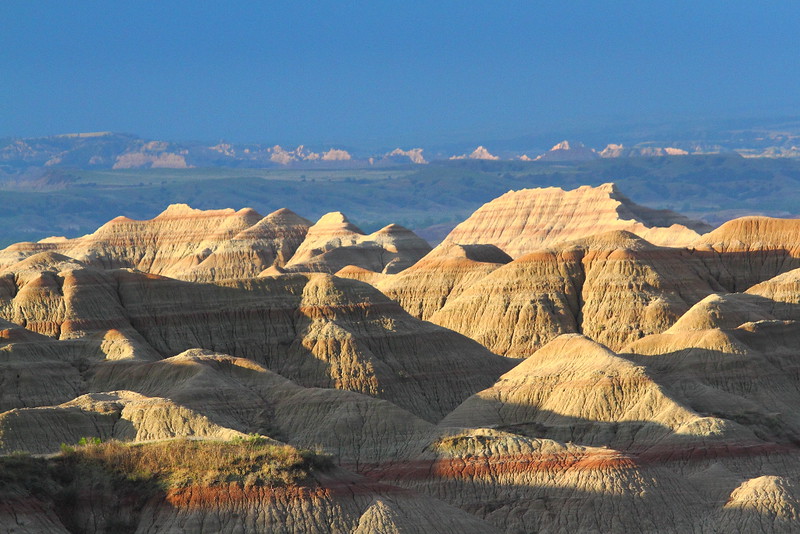 Figure 1. Stormy Morning, Badlands National Park.
After so many years, I am glad to return and visit South Dakota Badlands again in 2015. I was here during Memorial Day Week when the grass was fresh and green. It rained more than the average but I had fun any way.
Figure 1. Stormy Morning, Badlands National Park.
After so many years, I am glad to return and visit South Dakota Badlands again in 2015. I was here during Memorial Day Week when the grass was fresh and green. It rained more than the average but I had fun any way.
While badlands are not difficult to see, the scale is not like South Dakota Badlands. It extends so far with sharp contrast against the green grass. It is certainly an amazing scene to see in person.
I was doing a routine patrolling the park on one morning. A storm was starting to break and I got some good shots during this moment. This is one of my favorites. It shows not only the details with good contrast in light and color, but also gives a sense of the space. The subtle lighting due to the storm adds the charm further.
Of course this lighting didn't last long. I am just glad to to be at right place and right time.
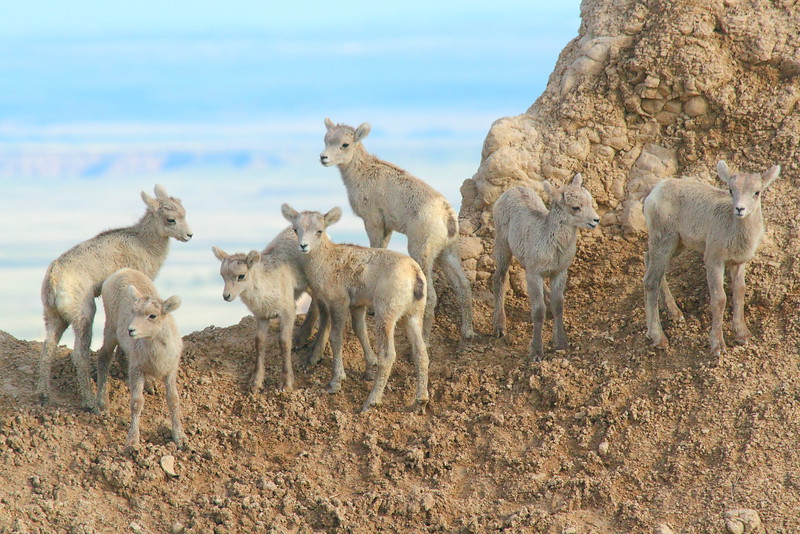 Figure 1. Bighorn Sheep Lambs, Badlands National Park.
While I've seen bighorn sheep in many places, Black Hills and Dakota Badlands are places on my wish list. On my May trip, I was blessed to see them in both places.
Figure 1. Bighorn Sheep Lambs, Badlands National Park.
While I've seen bighorn sheep in many places, Black Hills and Dakota Badlands are places on my wish list. On my May trip, I was blessed to see them in both places.
The original subspecies living in Black Hills and Dakota Badlands is Audubon Bighorn Sheep. Sadly they went extinct due to hunting and other causes. Rocky Mountain bighorn sheep were later reintroduced into these areas and so visitors can see them today. Badlands National Park highlight my bighorn sheep watching during this trip. I even gave up the plan to visit Devils Tower because I wanted to spend more time watching them.
Late May is the lambing season and I have counted 12 lambs in this part, Pinnacles Overlook to be exact, of the park. Although the weather was not stable during the couple days, I can still sat in the car and watched them. Lambs are playful and fun to watch. You would be thrilled when seeing them bouncing up and down the rugged terrain.
This park becomes one of my favorite places to watch bighorn sheep after this trip. I wish I can come back and see them again soon.
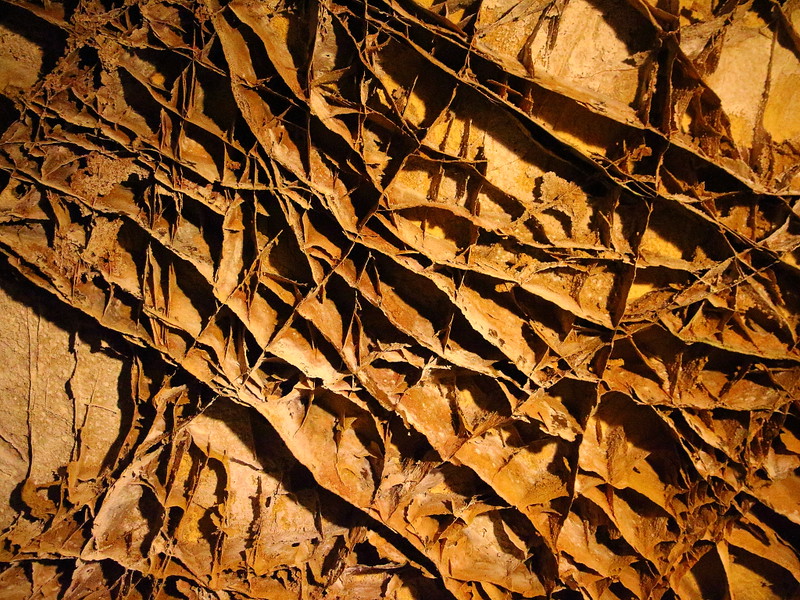 Figure 1. Boxwork Formation, Wind Cave National Park.
I made a trip to Black Hills and Badlands in South Dakota during Memorial Day Week. Wind Cave National Park is one stop, though I returned here couple times due to the rain. It rained a lot in 2015 spring here, which makes the cave a great place to visit.
Figure 1. Boxwork Formation, Wind Cave National Park.
I made a trip to Black Hills and Badlands in South Dakota during Memorial Day Week. Wind Cave National Park is one stop, though I returned here couple times due to the rain. It rained a lot in 2015 spring here, which makes the cave a great place to visit.
Boxwork Formation is the signature feature in Wind Cave National Park. They are abundant on Natural Entrance Tour. This rock formation is uncommon in caves and 95% of Boxwork Formation is found in Wind Cave. It is speleogen (formed by erosion) rather than speleothem (formed by deposit). On the other hand, Wind Cave is a rather dry cave. Typical formation like stalactite and stalagmite is not easily seen here.
On the ground, Wind Cave is also a good place to spot wildlife. Bison, pronghorn, elk and prairie dogs are frequently seen.
 Figure 1. Boxwork Formation from Natural Entrance Tour.
Figure 1. Boxwork Formation from Natural Entrance Tour.
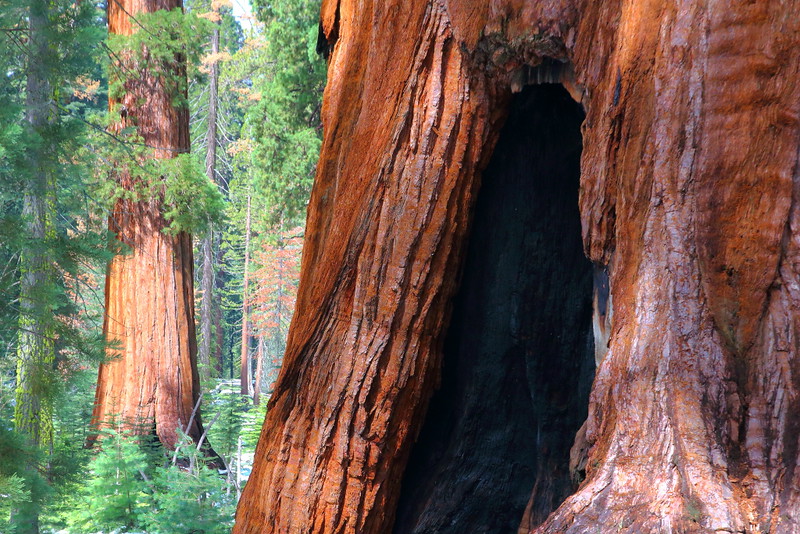 Figure 1. Giant Sequoia in Mariposa Grove, Yosemite National Park.
In addition to Yosemite Valley, Mariposa Grove of Giant Sequoias was also protected in Yosemite Grant Act in 1864. The massive size of this tree attracts visitors since then, domestic and international.
Figure 1. Giant Sequoia in Mariposa Grove, Yosemite National Park.
In addition to Yosemite Valley, Mariposa Grove of Giant Sequoias was also protected in Yosemite Grant Act in 1864. The massive size of this tree attracts visitors since then, domestic and international.
Regarding as largest living single organism on earth, it humbles everyone standing in front. In addition to the size, the fire scar is also a signature feature of this tree. Giant sequoias require fires to reproduce. The fire scar is the evidence of fires and the tree will recover from it eventually. Unfortunately, fires were suppressed for a long period and it restricted the new growth. The role of wildfire was understood to benefit the giant sequoias until decades ago. New policy to deal with wildfire was made to balance the ecosystem and human safety.
Due to intense visitation, Mariposa Grove of Giant Sequoias will undergo a 2 year restoration from July 2015. It will be closed during this period and thus I visited this place again in May.
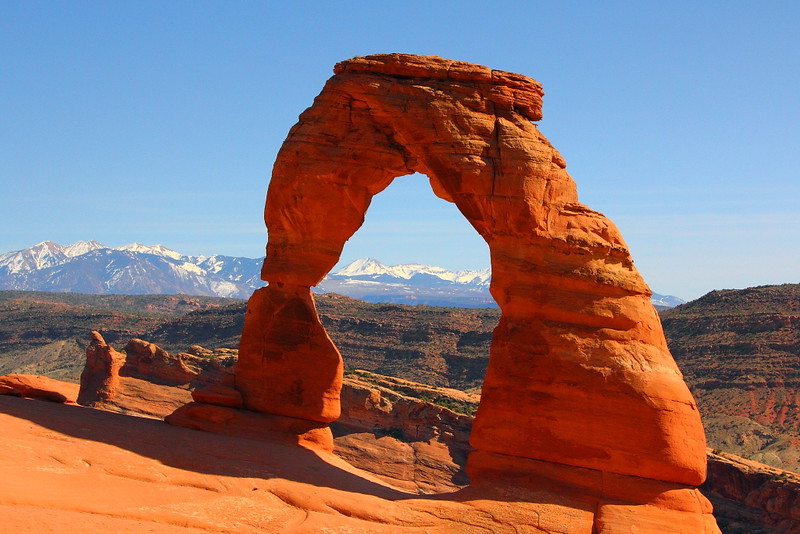 Figure 1. Delicate Arch, Arches National Park.
I made a short trip to Arches National Park in early April. The last time I was there before this trip is in 2010. There are too many places to visit. It's good to return to Arches and refresh my memory here.
Figure 1. Delicate Arch, Arches National Park.
I made a short trip to Arches National Park in early April. The last time I was there before this trip is in 2010. There are too many places to visit. It's good to return to Arches and refresh my memory here.
One reason I pick this time is the La Sal Mountains. Although not in the park, the snow capped mountain provide a good backdrop from arches and other rock formation. I wish there is more snow on the mountain top, but it still works for me. Another reason is to avoid the crowd in summer, which proves to be wrong. I am in the middle of spring break crowd. It is just as crowded as in summer.
Delicate Arch is probably the number one arch everyone wants to see in the park. It's a 3 mile round trip hike. Park considers it strenuous if hiking in summer as there is no shade along the trail. When I was there, it hit only low 70's in the afternoon. So it's kind of good time to hike this trail, though the wind made it a little chilly.
The view is as spectacular as before. Just like before, there were too many people near the arch taking pictures. It took me 30 minutes to get a chance for a clean shot. It's still about 2 hours before sunset, but I decide to go back. The shot works for me, but I'd like to pick another time here fora quieter moment.
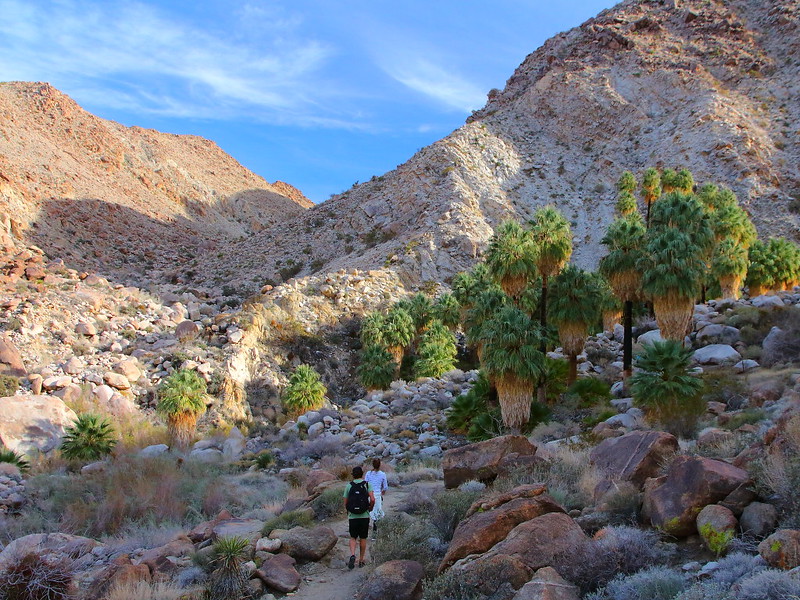 Figure 1. Fortynine Palms Oasis, Joshua Tree National Park.
There are some oases in Joshua Tree national Park. Fortynine Palms Oasis is one of these. This oasis is accessed by a 1.5 mile trail. A 3 mile round trip hike is considered easy or moderate at most, if not under high temperature.
Figure 1. Fortynine Palms Oasis, Joshua Tree National Park.
There are some oases in Joshua Tree national Park. Fortynine Palms Oasis is one of these. This oasis is accessed by a 1.5 mile trail. A 3 mile round trip hike is considered easy or moderate at most, if not under high temperature.
Desert is thought to be barren, or wasteland by many people. An oasis provides the contrast. A journey of lifeless landscape suddenly becomes lush green and full of life.
There is another reason for me to hike this trail. This is also the bighorn sheep habitat, which includes the rocky slope and water source. In some way, this place is similar to Borrego Palm Canyon in nearby Anza-Borrego Desert State Park.
Unfortunately, Bighorn sheep are not seen here for more than 10 years. Dogs are not allowed on this trail, but people don't obey this rule. The scent is detected by sheep and they consider it as a threat.
Even not seeing sheep, it is still an enjoyable trip.
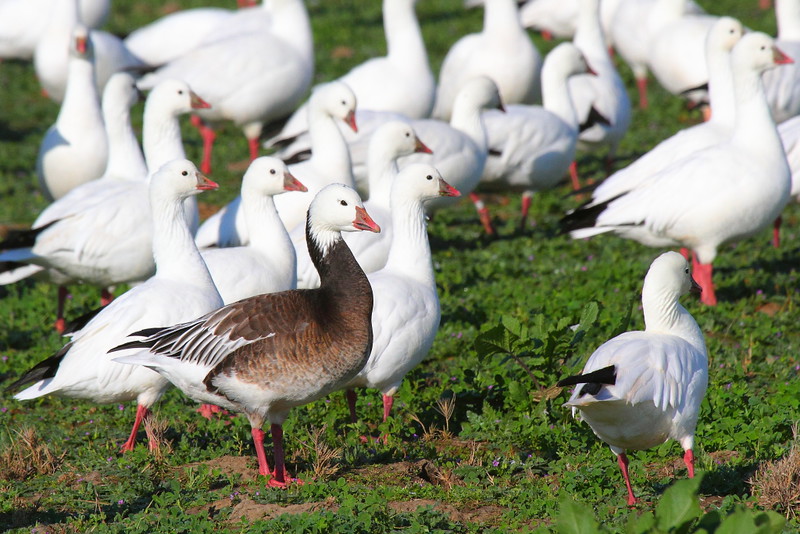 Figure 1. Ross's geese, Merced National Wildlife Refuge.
Figure 1. Ross's geese, Merced National Wildlife Refuge.
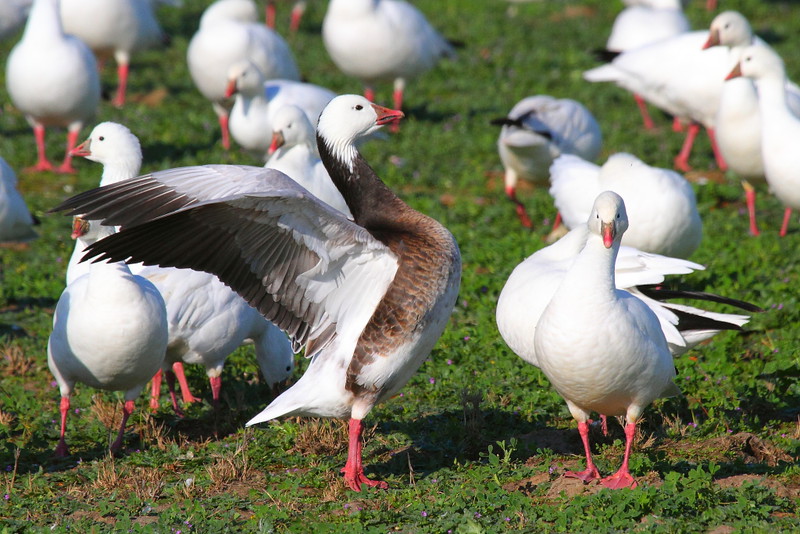 Figure 2. Another shot of the blue morph Ross's goose.
Figure 2. Another shot of the blue morph Ross's goose.
 Figure 3. Still another view of this blue morph Ross's goose.
Snow geese are a common sight in California, Central Valley to be specific, in winter. With very similar appearance, Ross's geese also winter in the same place. Among all places, Merced National Wildlife Refuge is the best place to see Ross's geese. In my experience, late winter such as February and March is the best time.
Figure 3. Still another view of this blue morph Ross's goose.
Snow geese are a common sight in California, Central Valley to be specific, in winter. With very similar appearance, Ross's geese also winter in the same place. Among all places, Merced National Wildlife Refuge is the best place to see Ross's geese. In my experience, late winter such as February and March is the best time.
Both snow and Ross's geese are white with black tips at the wings. However, some are with blue morph. Blue morph snow geese are more common and I've seen them in places such as Sacramento and Bosque del Apache National Wildlife Refuges. Blue morph Ross's geese are rare and were confirmed rather late than the counterpart of snow geese.
During the President Day weekend, I made a trip to Merced National Wildlife Refuge. Luckily I saw a blue morph Ross's goose up close. This may not be my first time seeing a blue morph Ross's goose. It was farther and difficult to confirm if it's a blue morph snow goose or Ross's goose.
People thought blue morph Ross's geese a hybrid between snow and Ross's geese. From the pictures I took, it seems that way. The light black area at beak seems to have features from both snow geese and Ross's geese.
If you want to see and confirm this rare blue morph version of a Ross's goose on the field, I highly recommend to make trips to Merced National Wildlife Refuge.
 Figure 4. Blue morph Ross's goose in flight.
Figure 4. Blue morph Ross's goose in flight.
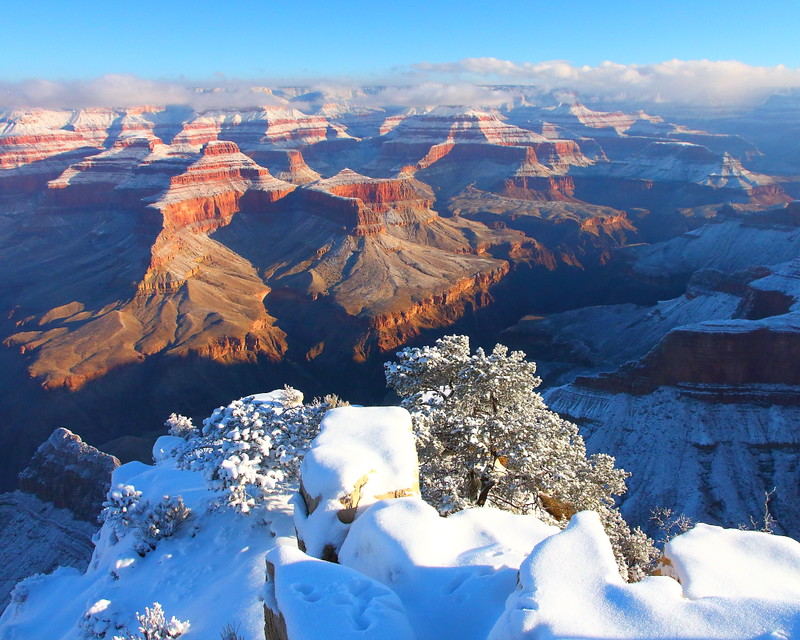 Figure 1. Pima Point, Grand Canyon National Park.
Although it snows in Grand Canyon, South Rim is not a snowy place. In addition, snow melts quickly. Timing has to be precise to see snowy landscape on South Rim.
Figure 1. Pima Point, Grand Canyon National Park.
Although it snows in Grand Canyon, South Rim is not a snowy place. In addition, snow melts quickly. Timing has to be precise to see snowy landscape on South Rim.
A winter storm were forecast Grand Canyon during New Year of 2015 and I decide to spend the vacation there. It turned out to be a challenge to arrive South Rim from southern California. I-40 was snow covered around Needles and some places are blocked along the way to Flagstaff. I needed to detour to almost Phoenix and turned north to Flagstaff instead. Then I entered the park from the east side.
I've never seen so much snow in Grand Canyon before and I was glad I made it here. I arrived in Grand Canyon Village when the storm started breaking. After getting some shots at sunset, it's time to call it a day and wait for the sunrise tomorrow.
The Hermit Road was still totally snow covered in the morning. Some elk were even on the road as I expected. Although I wished to see more snow at the bottom of the canyon, there was not so much on Tapeats sandstone layer from Pima Point. It still looked good though and this is the best I can get.
Overall, it is worth the long drive here.
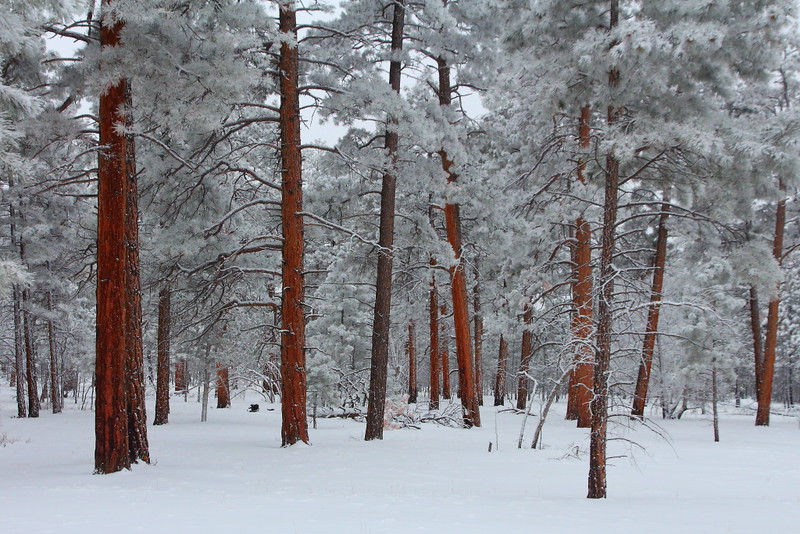 Figure 2. Ponderosa Pine Forest.
Figure 2. Ponderosa Pine Forest.




















